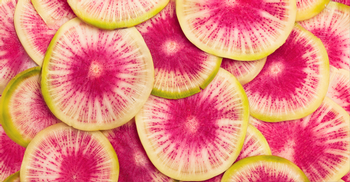News from the Edible Demo Garden
December 2020: What to Grow in Winter

Winter gardens vs. summer gardens
The primary difference between a winter and summer garden is how slowly the winter garden grows. The days are shorter, the nights cooler sometimes with frost and the sun is different too. It is lower in the sky and casts longer shadows that create problems if you’re not careful. For example, we planted Gypsy broccoli, a large broad-leafed plant, on the south side of a bed and then planted Broccoli Rabe, a much smaller plant on the North side. Broccoli Rabe gets the morning sun but is shaded by the far larger broccoli plants in the afternoons. Paying attention to shadowing is far more important in the winter when sunshine is at a premium.
Plants in the Brassica family for the winter garden
The Brassica family of plants will thrive in a winter garden. This family includes familiar plants like Broccoli, Cabbage, Kale, Cauliflower, and Radish. All of these plants are in our winter garden. We’ve planted three different kinds of broccoli: Gypsy broccoli, Broccoli Rabe, and Broccoli De Cicco. We’ve also planted Brussels Sprouts for the first time. And it’s a great time to plant watermelon radish. Not only is it beautiful when you cut it open, it can be eaten raw or roasted. Like any radish it is easy to grow from seed but don’t plant in the summer because the heat will produce a radish so spicy that it will be inedible.
In accord with the motto not to argue with success, we have again planted Astro Arugula, another member of the Brassica family. This was the big producer in our 2019-2020 winter garden. Whether you direct seed into your bed or use starts, it is easy to grow and will give you spicy (but not too much) greens all winter long.
A last word: horseradish
Horseradish is also in the Brassica Family and like winter squash, it is harvested in the late fall. We have grown horseradish in the Demo Garden for a few years now, more as an experiment than as something that is common on our tables. We just recently harvested 12 pounds of fleshy, pungent horseradish roots. After chopping it finely in the food processor and covering it with vinegar, it will last in your refrigerator for at least a month. Mixed with other condiments or sour cream, it is an unusual addition to recipes and will spice up anything you’re serving during the winter months.
You can get just as excited about a winter garden as you can your summer garden. Look for more ‘Tales of the Winter Garden’ next month as we report on our progress. Happy winter gardening adventures!
